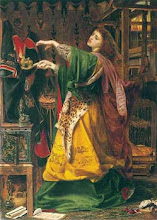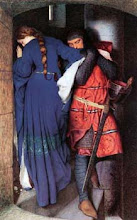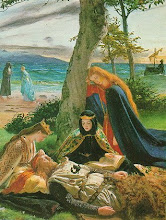Wales…and especially the Welsh language". Now, a Cardiff University academic has explored Wales’ influence on Tolkien in the first book-length study of his debts to Welsh language and literature.
Tolkien and Wales: Language, Literature and Identity traces the Welsh influences in Tolkien’s scholarly and creative work.
The study’s author, Dr Carl Phelpstead, Reader at the School of English, Communication and Philosophy, said: "The book examines a wide range of Tolkien’s published scholarly work and fiction, but I also draw on unpublished manuscripts and on Tolkien’s own collection of Welsh books in order to evaluate the influence of Wales and Welsh on both his writings and on his sense of national identity.
"One of the things that has interested me most in the unpublished material has been the small bits of evidence uncovered about Tolkien’s understanding of spoken – as opposed to written – Welsh."
Relevant material has been taken from some of Tolkien’s unpublished manuscripts in the Bodleian Library, Oxford, including drafts of his O’Donnell Lecture on ‘English and Welsh’ containing material not in the published version.
Dr Phelpstead also examines annotations handwritten by Tolkien in books on Welsh topics or in Welsh. He said: "These books are now in the English Faculty Library, Oxford. The marginal comments, corrections and other notes provide interesting evidence of the depth of Tolkien’s knowledge of medieval and modern Welsh."
The book will be launched on Saturday 21 May at a special event at Cardiff University’s Bute Building. Dr Phelpstead said: "Books are often launched with a party or drinks reception, but I thought that, given the wide interest in Tolkien’s work, it would be worth combining the book launch with some talks explaining and celebrating the influences of Wales and Welsh on his fiction and scholarship."
Dimitra Fimi of Cardiff University has studied how author JRR Tolkien drew on Welsh as he crafted the language of elves. His lifelong interest in Welsh began in childhood when he saw Welsh words on coal trucks arriving from Wales.
Dr Fimi said: “It was fascinating for him. It was something out of the ancient pasts of Britain from the west.”
As a writer he cherished the ancient history of Britain. In the Welsh language – and in his heavily annotated copies of The Mabinogion – he found inspiration to create his own mythology.
She believes Tolkien’s passion for language was at the heart of his literary work. “It opens a different door to the author’s mind. For me, I cannot separate The Lord of the Rings from the languages that are spoken there.” Although many fans regard the invented languages as “a bit of an accessory,” for Tolkien these were essential elements. He was baffled by the global success of the sagas, his passion was for the The Silmarillion.
Dr Fimi said: “It has made me look at The Silmarillion as a work closer to Tolkien’s heart than The Lord of the Rings ever was.
“When Tolkien was writing the first Elvish language there was Esperanto, but at the time there were at least 150 other projects. It was all very idealistic... Then World War I comes and shatters all these ideas.”
He was attracted to Welsh as a language of intrinsic beauty, “something ancient that had to be preserved and passed on.”

































